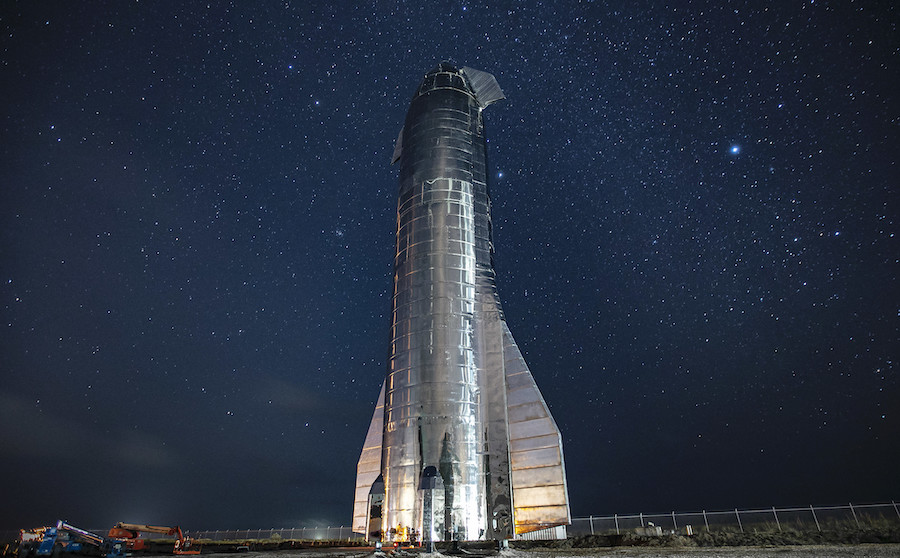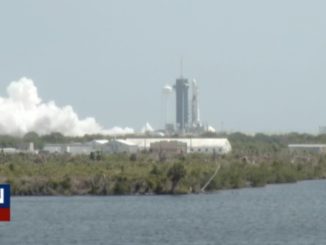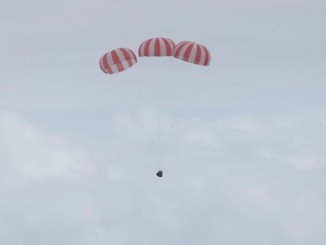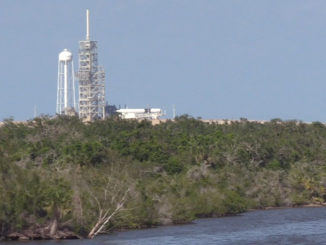
SpaceX says it is temporarily halting some activity on the company’s next-generation Starship program in Florida, allowing teams to focus on building a new Starship test vehicle in Texas.
But the company says it has not laid off any employees who were building a Starship test vehicle at an industrial yard in Cocoa, Florida, near SpaceX’s launch sites at the Kennedy Space Center and Cape Canaveral Air Force Station.
A few temporary employees at the Cocoa site chose to leave the company, but SpaceX says it offered the Starship team in Florida opportunities to transfer to work on Starship in Texas, or remain in Florida and work on the company’s other projects.
Some Starship work in Florida is continuing, such as construction of a new launch mount on pad 39A at KSC, the same launch complex where Apollo moon missions and space shuttles departed Earth. SpaceX currently leases the launch pad from NASA, and has outfitted the facility for future astronaut missions using the company’s Crew Dragon spacecraft.
Meanwhile, components of a new Starship vehicle, designated Mk3, have arrived at SpaceX’s launch site at Boca Chica, Texas. SpaceX is moving forward with construction of the Starship Mk3 vehicle after the company’s first full-scale Starship, Mk1, was damaged during a cryogenic loading test at high pressure last month at Boca Chica.
#SpaceX #StarshipEast smiles for the camera today Aug 15 at assembly facility in Cocoa, FL with work in progress by crews cranes actively manufacturing 2 massive #Starship structures pic.twitter.com/WlipLQfjkm
— Ken Kremer (@ken_kremer) August 16, 2019
SpaceX has said that the Nov. 20 accident that damaged the Starship Mk1 vehicle was not a serious setback. At the time of the Nov. 20 accident, company officials said they had already shelved plans to launch the Starship Mk1 rocket on a high-altitude test flight to 65,000 feet (20 kilometers).
Elon Musk, SpaceX’s founder and CEO, tweeted after the pressure test rupture that the Mk1 vehicle had value as a manufacturing pathfinder, but that the final Starship design is “quite different.” The Starship Mk3 will be designed for orbital missions, he added.
Musk’s statement Nov. 20 raised questions about the future of the Starship Mk2 vehicle, which SpaceX was building at the Cocoa, Florida, location. The fate of the Mk2 version of Starship remains unclear, but the latest information from SpaceX suggests it will not fly.
The Starship is one of two components of SpaceX’s next-generation reusable launch system, which the company says will be the most powerful rocket ever built, capable of lifting 150 tons of payload into space. Future Starship vehicles will be joined with a Super Heavy booster, which SpaceX is also developing, to loft cargo into Earth orbit, to the moon, Mars and other deep space destinations.
Six methane-fueled Raptor engines will power the orbital-class version of the Starship. In September, Musk said three Raptors will fly on the Starship for low-altitude tests, and up to 37 Raptor engines will power the Super Heavy booster.
The privately-developed Starship vehicle stands around 164 feet (50 meters) tall with its nose cone installed. The nose cone, which includes aerodynamic fins, was not on the rocket for Wednesday’s test. The vehicle measures around 30 feet (9 meters) in diameter, about one-and-a-half times the diameter of a Boeing 747 jumbo jet.
Combined with the Super Heavy first stage, the entire stack will stand around 387 feet (118 meters) tall. The Starship serves as the upper stage of the combined vehicle, and SpaceX says it will introduce an in-space refueling capability to allow Starships to ferry heavy payloads into deep space.
Both stages will be reusable, returning to Earth for vertical propulsive landings similar to SpaceX’s Falcon rocket boosters. SpaceX only recovers the first stage on its Falcon rocket family.
The Starship will eventually replace the Falcon family of rockets, hauling satellites into orbit and delivering cargo and crews to the moon and Mars, according to SpaceX.
Email the author.
Follow Stephen Clark on Twitter: @StephenClark1.



